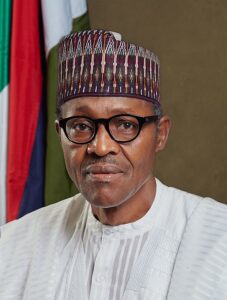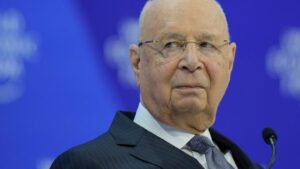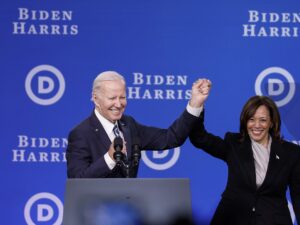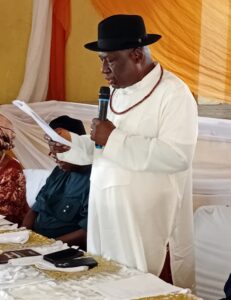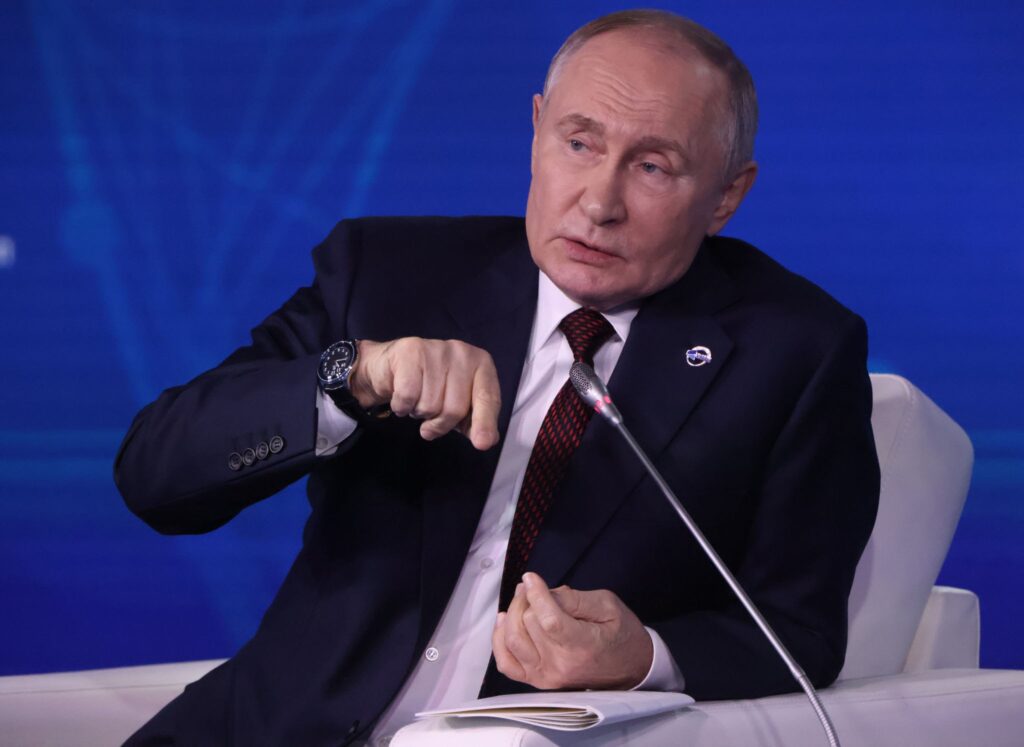
Russian President, Vladimir Putin
By Wilson Egbodje
President Putin ordered the Oreshnik ballistic missile strike on Dnipro, Ukraine on November 21, 2024. The development has generated a disproportionate stir across Europe, raising concerns about the existing asymmetrical military balance between Europe and Russia on one hand, and Asia on the other . Two reasons account for this. First, the missile is a newcomer into the European war theatre and, second, it came with the name hypersonic attached. More than that, Putin vaunted the missile as nuclear capable with a capacity for launching a volley of ten independently targetable re-entry vehicles simultaneously.
To win the confidence of his cowed Russian citizenry Putin engaged in further vacuous deliriums, promising to unleash same missile and, perhaps, other more deadly variants on European cities whose leaders allow the use of their weapons on Russian territory. True, any short or intermediate range ballistic missile with that capacity must be considered fearsome given its proximity considerations and how it could impact on neighbouring European capital cities at very short notice. The situation is futher aggravated by the reality that, across the globe, no effective anti- missile systems have been developed to check the menace of hypersonic weapons and their speed.
It sent Europe’s political and military leaders scurrying across international borders for consultations including midnight meetings, like witches.
One point is clear, Russia has been launching hypersonic missiles ( the kinzal and its iskander twin)since the onset of the Russo-Ukraine war. So Oreshnik is not and will not be a game changer as long as it is not nuclear armed.
Even if it is used for nuclear strikes Putin is aware that devasting consequences would follow from retaliatory strikes by British, French and U.S ocean and sea based submarine launched second strike forces. President Biden and retired General Ben Hodges, former commander of NATO forces in Europe have consistently warned Putin about this.
Some experts have argued that the Oreshnik isn’t far from a mutated form of the SS-20, Mirved with 10 warheads some of which may possibly be installed as decoys. Putin’s claims as to its Mach 20 speed is yet to be verified and no space based sattelites have released images proving such to be true or not.
Perhaps the greartest concern to European leaders at this time is the emergence of Donald Trump as President – elect in the just concluded elections in the United States of America. Trump had in the past threatened to pull his country out of NATO. That policy would leave Europe vulnerable and in great dilemma if implemented.
The present jittery scenario could have been averted had Europe braced up to putting its own deterrent measures in place before now. Under a NATO arrangement the U.S deployed 222 Tomahawk cruise and 100 Pershing II missiles to support its allies in western Europe. All were withdrawn after the collapse of the Soviet Union in 1991 . These two missile systems served as a counter to the Soviet Union’s proposed deployment of its SS-18, SS- 19 and SS – 20 short and intermediate-range missiles. The present predicament therefore points to the fact that failure to do the needful at the desired time can be consequential and hurtful in the long term.
The missile systems on both sides became formidable bargaining chips during a near decade-long negotiations. The former Soviet Defence minister Dmitry Ustinov once told American veteran arms control negotiator Paul Nitze, that if these objects of negotiations were placed on both sides of the iron curtain, leaders of NATO and Warsaw Pact countries would find themselves “peeping at each other through a dense palisade of missiles”.
The deployments gave Europe a palpable sense of security. But the rented or hired hardwares with triggers under the control of foreign fingers should have been very disconcerting to European leaders. So it is strange that their withdrawal did not jolt Britain and EU nations into collectively searching for an alternative form of deterrence.
Britain and France today respectively have their own strong nuclear forces though not a match for Russia with over 5,000 nuclear warheads. In global assesment of numerical strength only the U.S has that capacity. All the other nuclear powers combined – Britain, France, China, India, Pakistan, Israel and North Korea – posses just a little above half that number.
That speaks volumes to the gravity of the dire situation now unfolding. The Russian threat is even more real with President Trump back in place as President-elect in far away America. But the same Trump has been the main catalyst to all of this. Under the first Trump presidency, Washington’s global strategy de-empasized security of Europe as its central policy – a deviation from the historical position of his predecessors.
In the first Trump Administration, Washington obliquely shifted its geo-strategic interests and commitments to the Indo-Pacific. It has been judged by experts as a detrimental deviation. In a sense, it completely derailed America’s focus on its obligations towards NATO’s plans for the defense of Europe. That policy also placed less emphasis on arms control negotiations.
Admittedly, President Reagan’s failure to push his Strategic Defense Initiative or Star Wars programme through congress because of its cost benefit analysis marked the beginning of U.S disinterestedness in arms control talks. Similarly, accusations of Soviet cheating at Krasnoyarsk were easily drummed up by successive US administrations as an excuse for abandoning arms controll negotiations. The climax was reached in the first Trump administration.
The Krasnyask radar station
The lull in the frenzied pace of negotiations initiated by the President Nixon administration began with US accusations of Soviet cheating in anti balistic missile systems dubiously stationed at Krasnoyarsk , a hinterlad town in Siberia, Russia. The Soviets deviated from a negotiated position emphasizing that such systems be positioned along the coastline to alert on incoming missile attacks. Moscow lied that what it had at Krasnoyarsk in the hinterland was not an installed anti balistic missile system. Investigations proved contrary.
From that point going forward the U.S lost interest in monitoring strategic arms forces with the Soviets. Lack of faith in negotiated agreements, implementation and monitoring, in fact, contributed to the SALT II agreements not being ratified by the U.S House of Representatives under Presidents Jimmy Carter and Ronald Reagan.
U.S presidents from Nixon to Obama – spanning four decades – maintained an open ended policy of occasional checks on Russian production of strategic weapons arsenals. However, when those talks broke down in 2018 President Trump simply walked away from further talks and sealed all openings for re-opening negotiations.
Unnoticed and unrestrained Putin began a stealthy ride to perfection of advanced secret weapons systems. On this the west remained in the dark or at least feigned igorance of the obvious.
Advances in hypersonic missile technology in Russia and China in the past eight years have placed the US in an awkward position. The reason is that what engendered true strategic caution on leaders of both sides in the post Cold War era has ceased to be. Krasnoyarsk remains a reference point for brazen deceit and cheating that Trunmp used to exit talks.
Today Putin brags about Russia being the most advanced nation in hypersonic weapons technology and other new weapons systems waiting to be tested. The resultant experimental Oreshnik strike on Dnipro is evidently so, at least, for its panicking effect and the rhetoric that trailed it. The facts will remain so until Europe establishes evidence to the contrary, and is able to give tenable assurances to defuse its present dilemma.
For now Europe cannot successfully confront Russia militarily without the U.S. In all sincerity it will take Europe another five or more years of evolutionary and systemic arms procurement program to attain meaningful parity with Russia. Only such collective commitment would guarantee a significant measure of deterrence if Washington pulls out of NATO completely.

